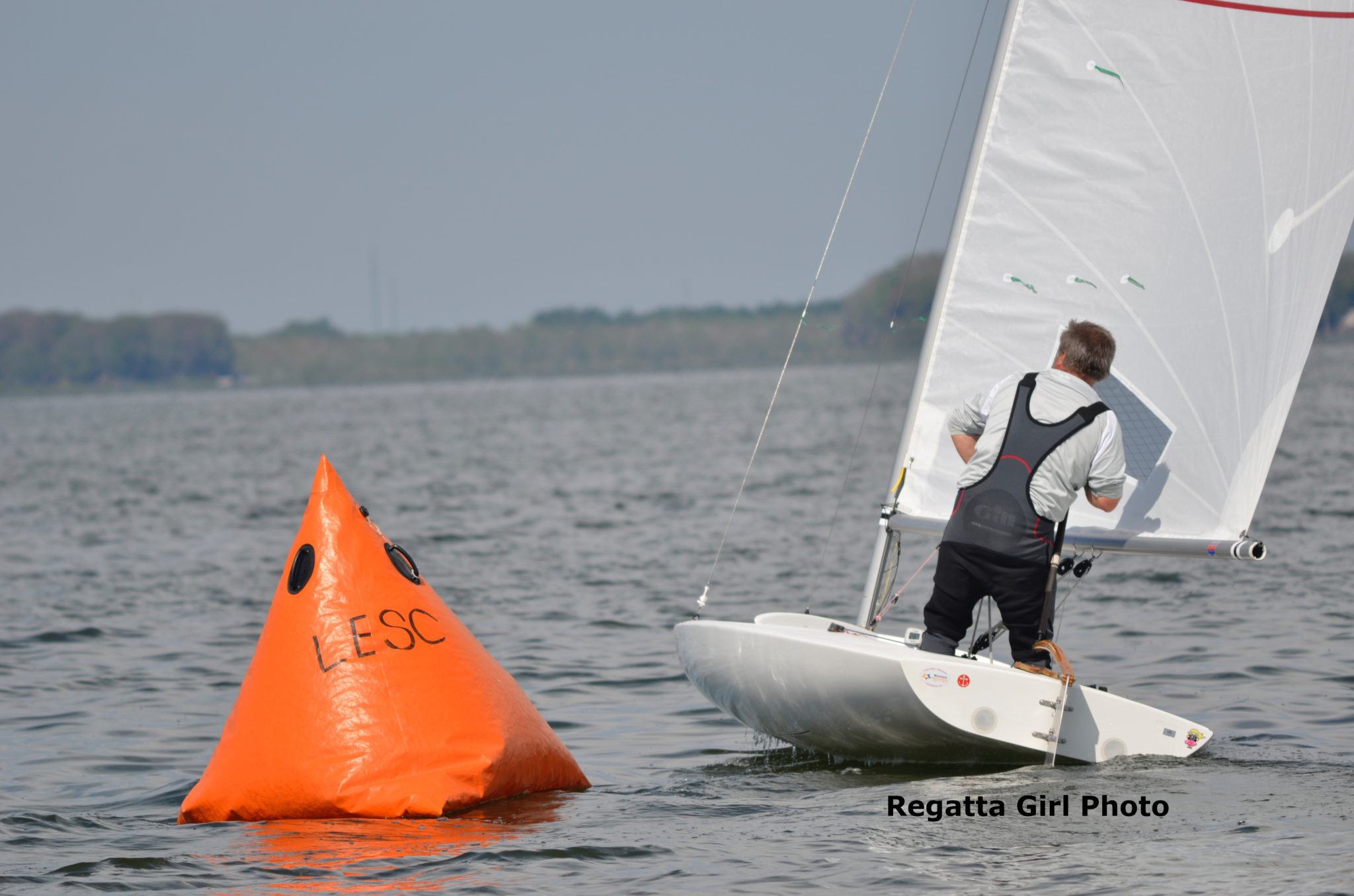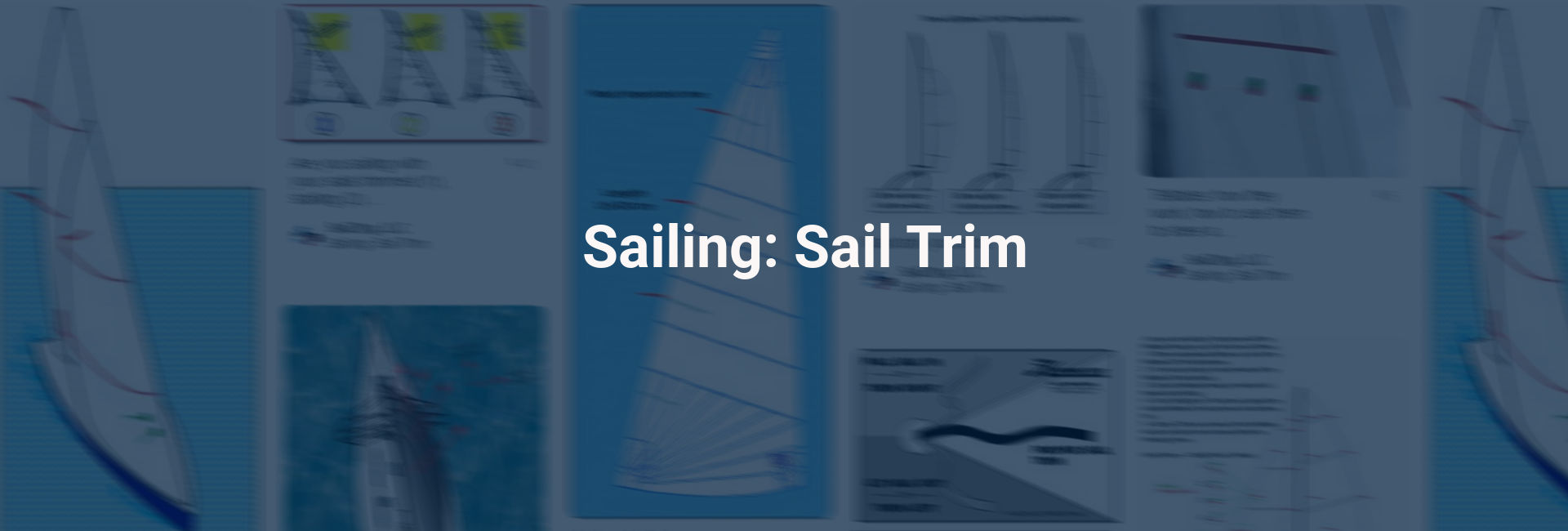Top sailors prioritize smooth weight movement and constant angle of heel, especially in light air. In light air, flow over sails and foils boards is marginal. Any disturbance shakes the flow and makes an already tough situation worse. Even without abrupt disturbances, any change from the optimum angle of heel robs performance.
We struggle with smoothness. Luckily, a very observant friend offered us tips on weight movement in the light air range. Then we reviewed an article on the Melges website, Light-Air Lessons on the MC Scow, by Ted Keller. Read this article – most of it applies to all boats. Key points include:
- Keep heel angle to the optimum – most people over-heel, so don’t delay moving weight to windward.
- Focus on your tiller hand – in light air, use a frying pan grip to pin the tiller on the deck. This minimizes movement.
- Move slowly and deliberately – your movements shouldn’t make any noise.
Going deeper still, we reviewed Master Light Air Skiff Sailing in the 29er, by Willie McBride and sections of Fast Handling Technique, by Frank Bethwaite.
Key Smoothness Principles
Anticipate
You can’t react smoothly when you don’t see changes coming. This means head out of the boat.
Adopt the “Bell Curve” Approach to Changes
Willie McBride uses this term to help you become smoother with any maneuver, whether it’s shifting weight, adjusting the mainsheet, or moving the rudder. You start with a small change and then ramp up the response as needed, before tapering off as you approach the desired condition. Bethwaite calls this feedback control vs. ballistic control.
Prioritize Adjustments – Mainsheet, then Weight, then Rudder
Bethwaite’s Fast Handling Technique consistently preaches that the fast sailors prioritize mainsheet adjustments, since they can be made quickly without adding much drag. Moving your weight abruptly or turning the rudder add more drag. Smooth weight movement is fine, but it needs to be slow and therefore can’t always keep up with the need for changes. Rudder movement is the last priority.
In a light air puff, you may be able to hold the boat down by hiking. However, I’ve found that most puffs build too quickly to allow for this, even when you anticipate. Consider that easing the main slightly to match the change in apparent wind will help you build speed while you smoothly move to a hiking position.
McBride makes the point that you can reduce disturbances by using a little bit of everything – small adjustments in weight, trim, and heading, each of which are almost imperceptible to an observer.
Smooth Weight Movement Techniques – Four Zones
Develop a weight movement and positioning technique that works for you. It needs to be super smooth, allow precise control of heel angle, and keep weight forward. This calls for strength and flexibility: McBride calls it “boat yoga” and has his skiff trainees practice it in all sorts of crazy positions. Practice until you master four zones and the transitions between them.
#1. Under boom
In a real drifter, you may need to sit leeward of the boom and hike to maintain heel angle and let gravity help open the leech. Challenges to master in this position include:
- flexibility to get under boom and then move back to windward;
- ability to hold still while hiking to leeward;
- developing alternate sail trim references. Try using a forestay telltale and the leeward sail telltales. You may also be able to see the leech ribbons if you hike out.
- ability to look around for wind.
To avoid this difficult position, some sailors are experimenting with letting the traveler down and sitting to windward of the boom. The is counter-intuitive, since dropping the traveler reduces twist. However, it may help keep boat speed up for other reasons. See our post, Cat-Rigged Scows: Is Boom Over the Corner” a Good Thing?
#2. Sitting low (boom to leeward)
Sit forward with knees and shoulders facing across the boat. Turn your neck to look around and up. Hold the tiller extension in your aft hand with a frying pan grip and pin it to the deck. Lean to windward or leeward to balance the boat. Have your feet planted and ready to transition to the middle.
#3. Middle
In this zone, we’ve seen sailors stand, crouch, kneel, and sit on the cockpit floor. Which is best? You want an approach that meets several requirements:
- allows smooth weight movement in the relatively large range between sitting on the leeward and windward decks;
- keeps weight forward;
- keeps body low to avoid windage;
- allows you to look ahead for wind,
- allows you to check sail trim.
These requirements argue for a crouched position. Standing causes windage. Sitting on the cockpit floor lets you see sail trim but doesn’t give you enough range of motion or enough vision outside the boat. Sitting or kneeling may require awkward transitions and don’t let you feel the boat as well. With a crouch, you remain relatively low and can use foot placement and small shifts of your torso to cover a wide range.
In this crouched position, it’s best to face across the boat as much as possible. This helps keep weight forward. Before you leave the sitting low position, put your tiller extension on the high side and pin it to the deck. When it’s time to move, move your aft foot to the high side, rise to a crouch, and press with tiller hand and foot to prevent the boat from heeling up. As you need more windward pressure, simply shift more of your torso.
To transition smoothly to sitting high, pivot and sit lightly, keeping much of your weight on your feet. Keep the tiller extension behind your back in the original hand or place it on the deck and sit on it. Switch hands when you’re settled. In this transition, you might also temporarily cleat the sheet to avoid an inadvertent trim or ease.
#4. Just sitting high
Things start to get a little easier in this zone. Just lean in and out to shift weight. Keep some weight on your feet in case you need to transition back to the middle. Slide out to a hiking position as the wind builds. The biggest challenge is sliding weight in from hiking during a lull. Bethwaite says to buy time by squeezing the mainsheet in to get the last bit of power. Then ease to keep the leech open.
Develop Your Weight Movement Skills
These skills don’t come automatically. Instead of using light air as an excuse not to sail, use it as an opportunity to practice these skills. Here are some goals and tips.
- Develop your ability to identify a five-degree change in angle of heel. Use an inclinometer at first. Then sharpen other references, such as the horizon and water relative to the rail, so that you rely less on the inclinometer.
- Try out the positioning techniques and learn what works for you. Concentrate on anticipating, smoothness, and feeling the boat.
- Consider practicing yoga for additional strength and flexibility.
- Practice rudderless sailing to sharpen your feel for the effects of weight movement and sail trim. Most coaches recommend this, but very few of us try it.
Related Content
Light Air Boat Speed: Focus on Flow
Cat-Rigged Scows: Is “Boom Over the Corner” a Good Thing?





